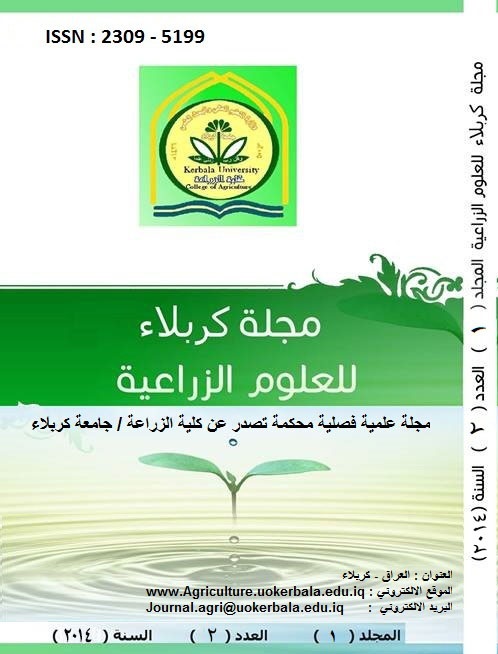The influence of abscisic acid and the physical status of media on the production and qualitative characters of microtubers produced from two potato cultivars grown by in vitro culture.
DOI:
https://doi.org/10.59658/jkas.v1i2.348Keywords:
microtubers, Solanum tuberosum, abscisic acid, media physical statusAbstract
This experiment was conducted in the tissue culture laboratory, Horticulture Department, Agriculture College, University of Baghdad, to investigate the influences of abscsic acid (ABA) and the physical status of growing media for two potato cultivars on the production and qualitative characters of microtubers. Different ABA concentration of 0.0 , 50 , 100 , 150 and 200 mg .l-1 was added to the two growing media the first one was liquid ( without agar ) while the other type the semi-solid media ( 7g.l-1 agar ) for two potato cultivars , Desiree and Revira . Adding ABA at the rate of 0.5 mg . l-1 significantly increased the number, weight , diameter of the microtubers in addition the reducing sugar content and the percentage of protein , while adding 0.25 mg.l-1ABA significantly increased the percentage of starch and this percentage was decresed by increasing the ABA concentration . The liquid growing media was significantly superior in the quantitative and qualitative microtubers characters as compared with semi-solid grown media especially when 0.5 mg.l-1 ABA was used. The Revira cultivar was superior then Desiree in this studied characters except the percentage of starch which was not influenced by the cultivar or the physical status of the growing. The percentage of starch was increased in Desiree cultivar when 0.25 mg.l-1 ABA was added.
Downloads
Published
How to Cite
Issue
Section
License
Copyright (c) 2014 Copyright (c) 2024 is the Author's article. Published by the Journal of Kerbala for Agricultural Sciences under a CC BY 4.0 license

This work is licensed under a Creative Commons Attribution 4.0 International License.
Licensing Terms
All articles are published under a Creative Commons License and will be directed to the Creative Commons Attribution 4.0 International License (CC BY 4.0) That permits use, distribution, and reproduction in any medium, provided the original work is properly cited. This license also allows the work to be used for commercial purposes.
Use by both non-commercial and commercial users
This content is licensed under a Creative Commons Attribution 4.0 International (CC BY 4.0) license, permitting use by both non-commercial and commercial users. Individual users may access, download, copy, display, and redistribute the articles to colleagues, as well as adapt, translate, and text- and data-mine the content, subject to the following conditions:
- The author's moral rights, including the right of attribution and the right to protect their work from derogatory treatment, are respected.
- Where content in the article is identified as belonging to a third party, users must ensure that any reuse complies with the copyright policies of the owner of that content.
- If the article content is reused for research or educational purposes, users should maintain a link to the appropriate bibliographic citation, including the DOI and a link to the published version on the journal's website.

